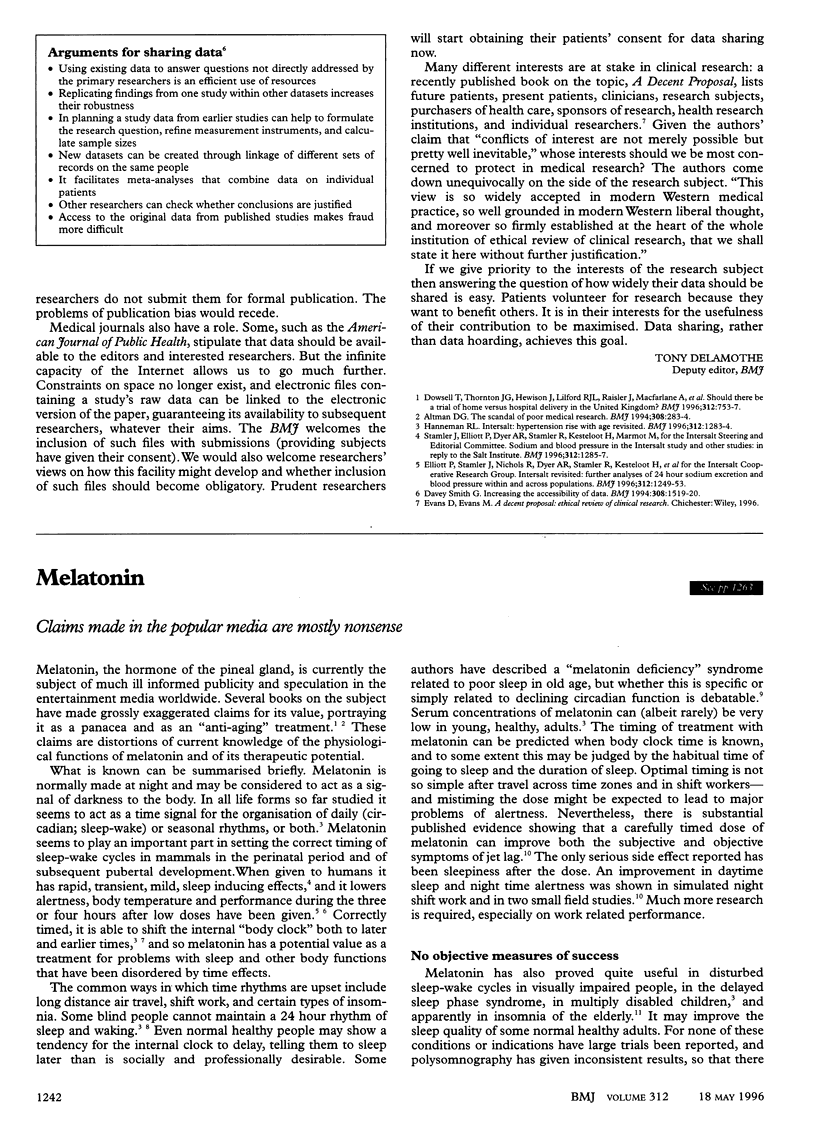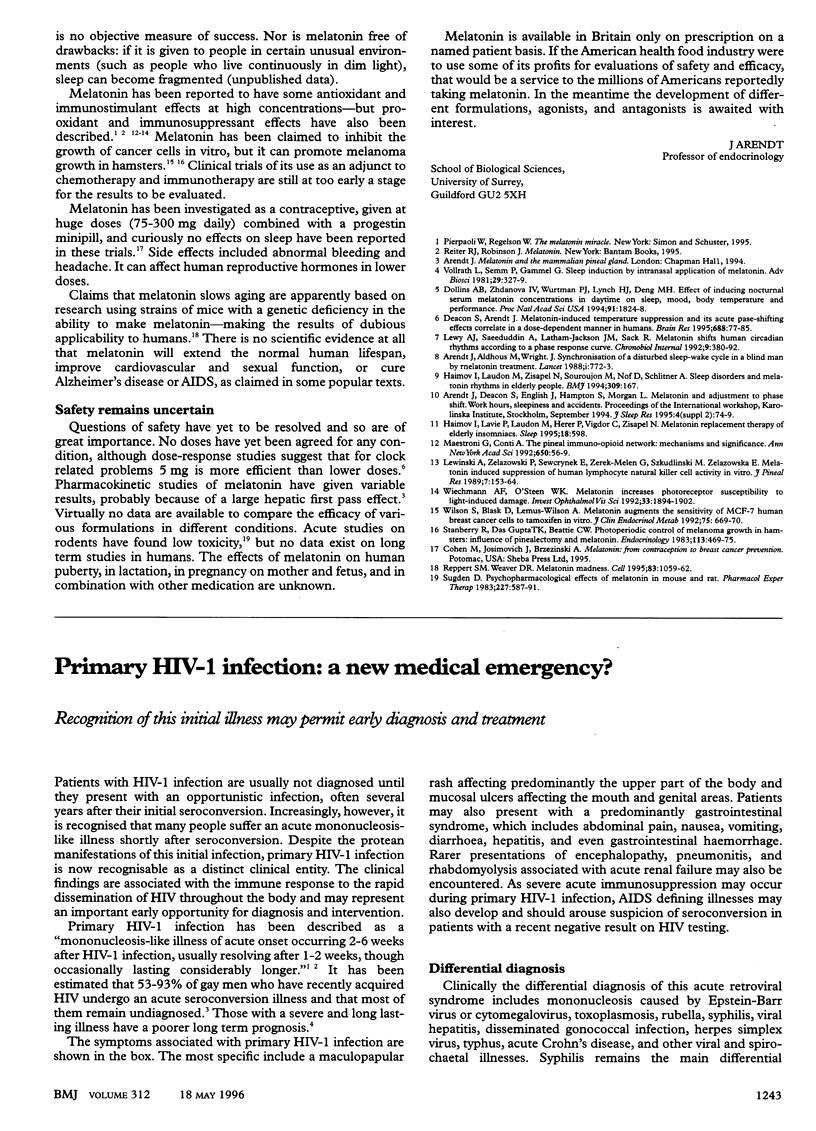Full text
PDF

Selected References
These references are in PubMed. This may not be the complete list of references from this article.
- Arendt J., Aldhous M., Wright J. Synchronisation of a disturbed sleep-wake cycle in a blind man by melatonin treatment. Lancet. 1988 Apr 2;1(8588):772–773. doi: 10.1016/s0140-6736(88)91586-3. [DOI] [PubMed] [Google Scholar]
- Deacon S., Arendt J. Melatonin-induced temperature suppression and its acute phase-shifting effects correlate in a dose-dependent manner in humans. Brain Res. 1995 Aug 7;688(1-2):77–85. doi: 10.1016/0006-8993(95)96872-i. [DOI] [PubMed] [Google Scholar]
- Dollins A. B., Zhdanova I. V., Wurtman R. J., Lynch H. J., Deng M. H. Effect of inducing nocturnal serum melatonin concentrations in daytime on sleep, mood, body temperature, and performance. Proc Natl Acad Sci U S A. 1994 Mar 1;91(5):1824–1828. doi: 10.1073/pnas.91.5.1824. [DOI] [PMC free article] [PubMed] [Google Scholar]
- Haimov I., Laudon M., Zisapel N., Souroujon M., Nof D., Shlitner A., Herer P., Tzischinsky O., Lavie P. Sleep disorders and melatonin rhythms in elderly people. BMJ. 1994 Jul 16;309(6948):167–167. doi: 10.1136/bmj.309.6948.167. [DOI] [PMC free article] [PubMed] [Google Scholar]
- Haimov I., Lavie P., Laudon M., Herer P., Vigder C., Zisapel N. Melatonin replacement therapy of elderly insomniacs. Sleep. 1995 Sep;18(7):598–603. doi: 10.1093/sleep/18.7.598. [DOI] [PubMed] [Google Scholar]
- Lewiński A., Zelazowski P., Sewerynek E., Zerek-Mełeń G., Szkudliński M., Zelazowska E. Melatonin-induced suppression of human lymphocyte natural killer activity in vitro. J Pineal Res. 1989;7(2):153–164. doi: 10.1111/j.1600-079x.1989.tb00663.x. [DOI] [PubMed] [Google Scholar]
- Lewy A. J., Ahmed S., Jackson J. M., Sack R. L. Melatonin shifts human circadian rhythms according to a phase-response curve. Chronobiol Int. 1992 Oct;9(5):380–392. doi: 10.3109/07420529209064550. [DOI] [PubMed] [Google Scholar]
- Maestroni G. J., Conti A. The pineal-immuno-opioid network. Mechanisms and significance. Ann N Y Acad Sci. 1992 Apr 15;650:56–59. doi: 10.1111/j.1749-6632.1992.tb49095.x. [DOI] [PubMed] [Google Scholar]
- Reppert S. M., Weaver D. R. Melatonin madness. Cell. 1995 Dec 29;83(7):1059–1062. doi: 10.1016/0092-8674(95)90131-0. [DOI] [PubMed] [Google Scholar]
- Stanberry L. R., Das Gupta T. K., Beattie C. W. Photoperiodic control of melanoma growth in hamsters: influence of pinealectomy and melatonin. Endocrinology. 1983 Aug;113(2):469–475. doi: 10.1210/endo-113-2-469. [DOI] [PubMed] [Google Scholar]
- Sugden D. Psychopharmacological effects of melatonin in mouse and rat. J Pharmacol Exp Ther. 1983 Dec;227(3):587–591. [PubMed] [Google Scholar]
- Wiechmann A. F., O'Steen W. K. Melatonin increases photoreceptor susceptibility to light-induced damage. Invest Ophthalmol Vis Sci. 1992 May;33(6):1894–1902. [PubMed] [Google Scholar]
- Wilson S. T., Blask D. E., Lemus-Wilson A. M. Melatonin augments the sensitivity of MCF-7 human breast cancer cells to tamoxifen in vitro. J Clin Endocrinol Metab. 1992 Aug;75(2):669–670. doi: 10.1210/jcem.75.2.1639964. [DOI] [PubMed] [Google Scholar]


